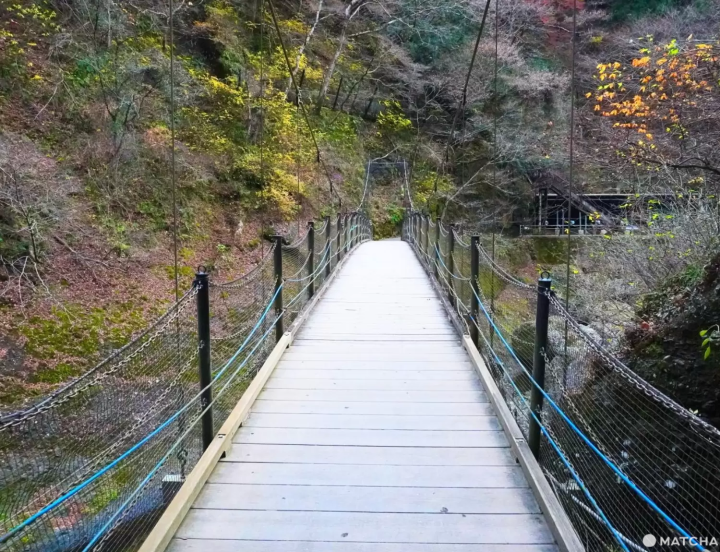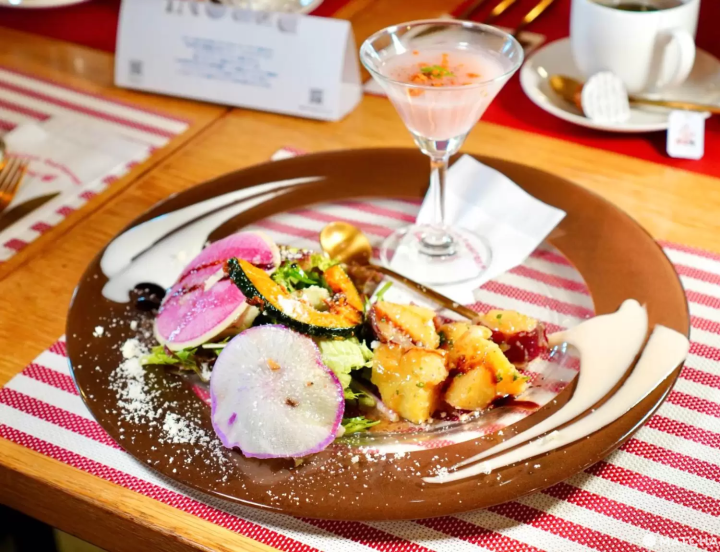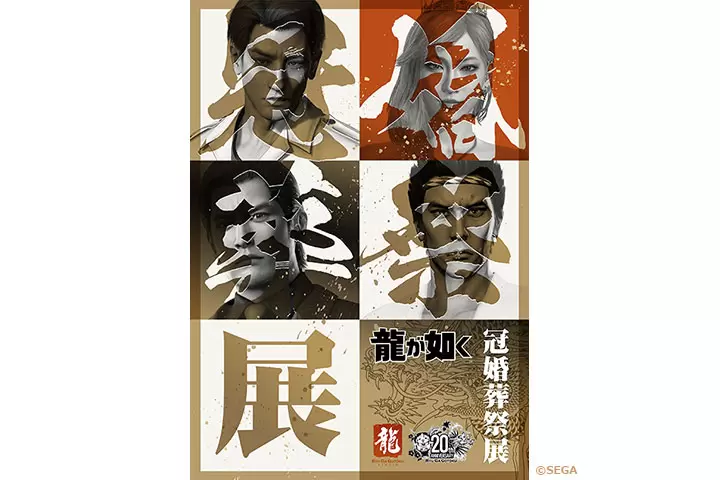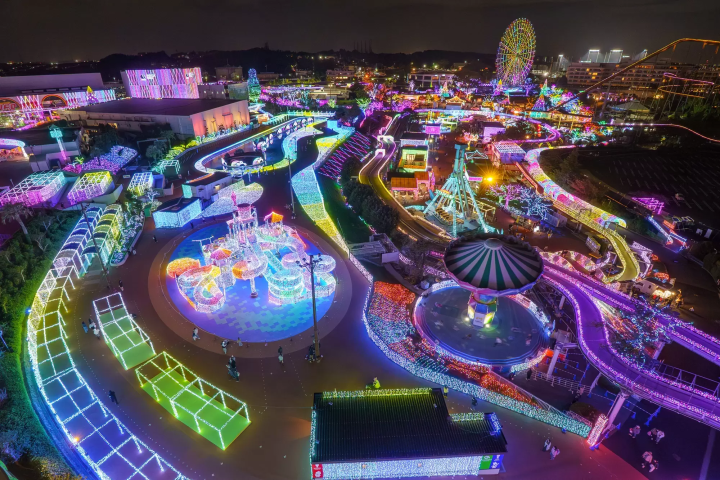Ibaraki Outdoor Adventure: 3 Days Exploring Nature and Hidden Gems

Ibaraki is a nature-rich region easily accessible from Tokyo by car or train. We introduce a three-day itinerary through the great outdoors in Ibaraki, from Oiwa Shrine and the Ryujin Suspension Bridge to the Fukuroda Falls and the scenic cycling road connecting Tsuchiura and Tsukuba.
Exciting Discoveries in Ibaraki

If you want to see the “real” Japan, one of the best ways to do so is to rent a car and head outside of the major cities. Japan is full of inspiring natural scenery and places to help you feel relaxed, or even get in touch with your spiritual side.
A great place to do all of that is in Ibaraki, which can be easily reached from Tokyo by car or train. Ibaraki is a vast prefecture that has hiking trails, cycling routes, lakes, and parks, and stretches all the way out to the ocean.
In this three-day itinerary, we’ll show you a snapshot of what Ibaraki has to offer. We’ll explore some outdoor activities that are best in the perfect weather of spring or autumn, as well as a few places to eat or stay the night along the way. So grab your license, and let’s explore!
Day 1 Morning: Hiking to Oiwa Shrine
We start our Ibaraki adventure in Hitachi, and end in Tsuchiura. So, if you are coming from Tokyo and renting a car, it is a good idea to rent from one of those spots. Once you’ve got your car, it’s time to head to our first stop – Oiwa Shrine.

Oiwa Shrine is a sacred site with a long history, mentioned in one of Japan's oldest chronicles, the "Hitachi no Kuni Fudoki" (721 AD). Ritual sites from the latter part of the Jomon period (over 3,000 years ago) have been found in this area. During the Edo period (1603-1868), lords of the Mito domain visited the shrine as their official place of worship.
Unlike many other shrines in Japan, this shrine enshrines a large number of deities—188 in total—and the grounds contain twelve different shrines. The precincts of Oiwa Shrine are known as a "power spot" due to their mystical energy. In particular, the main hall of the shrine, protected by two stone statues, features a wooden prayer hall exuding a solemn atmosphere.

Kabire Jingu Shrine, located in the heart of the forest (left), and the Sanbon Sugi (right)
Picture courtesy of Oiwa Shrine
The various shrines in the precincts are surrounded by tall cedar trees and dotted with statues, ponds, lanterns, and various ritual implements. Some of the trees are said to be several hundred years old. In particular, the three-way split cedar near the entrance, known as the "Sanbon Sugi," is a sacred tree with an age of over 600 years.

Picture courtesy of Oiwa Shrine
The area surrounding the shrine is also perfect for hiking during the spring and autumn. The hiking trail from the Oiwa Shrine to the mountaintop takes about one hour one way. Particularly, the approach to the shrine is relatively gentle in slope. Along the way, there is a boundary between the Cambrian (500 million years ago) and Cretaceous (100 million years ago) strata, indicating the ancientness of this mountain as the oldest geological formation in Japan.
As you'll be walking through the forest, it's advisable to bring sturdy shoes, water, and warm clothing. While the mountaintop is a sacred space for Mount Oiwa, upon reaching it, you’ll be greeted with beautiful views of the surrounding natural scenery.
Day 1 Afternoon and Evening: Ryujin Suspension Bridge

Picture courtesy of Ryujin Suspension Bridge
Next, it’s time to head west (30 min. by car) to the Ryujin Suspension Bridge area, home to more beautiful views, food, and hiking options. The bridge itself is one of Japan’s longest pedestrian-only suspension bridge, at an impressive 375m in length!
For lunch, just above the souvenir shop is Mori no Kaze, a restaurant serving soba and udon noodles, as well as other teishoku (set meals) with a view.

Picture courtesy of Ryujin Suspension Bridge
There are longer hiking courses to explore the lakes and mountain scenery or to get a better view of the bridge across the valley. Depending on the course, these take three to five hours in total.
If another hike is too much, you can walk across the bridge to take pictures, look down from 100m in the air, or visit the Ryujin Carillon at the other end of the bridge, noticeable by its big dragon painting. If you book in advance, you can also bungee jump off the bridge or go canoeing in the lake.

Picture courtesy of Ryujin Suspension Bridge
The area also has its own barbecue and campgrounds, and an onsen ryokan (hot spring inn) where you can try some local food, soak your tired feet, and get some rest in a cozy tatami room.
There are a few other onsen ryokan around, too, particularly in the Daigo area which we visit on day two, so book your favorite, or simply stay in the same one as the following night.
Day 2 Morning: Fukuroda Falls

After all the hiking of day one, day two is a little more focused on exploration and relaxation, starting with an easier walk around Fukuroda Falls.

The Fukuroda Falls, boasting a height of 120 meters and a width of 73 meters, are also known as the "Yodo no Taki," a name derived from the waterfall's flow over four layers of rock.
Four is an important number here because the falls are also known for their distinct beauty across the four seasons: new buds and cool air in spring, luscious greenery in summer, beautiful reds and golds in autumn, and its frozen waters in winter.

The area is encircled by a pathway with a mini suspension bridge that starts at the ticket office on the north side. Mid-way in the tunnel, there is a monument called the "Lovers' Sanctuary."
The pathway takes you through a tunnel to the three-tiered observation deck that allows you to see the falls from different angles. From there, you can walk alongside the river and back towards the souvenir shop (and closest parking lot).
A Detour for an Exceptional Italian Lunch

From there, we highly recommend visiting the Italian Restaurant Raul. Although it is about a 40-minute drive from the falls, it is well worth it for what is likely some of the best Italian food you can find in Ibaraki.
The restaurant is owned by a passionate man named Raul who spent many years backpacking and working in kitchens across Europe to learn their culinary secrets.

Raul decided to keep much of the building’s historic elements in place, but has combined that with a wood-burning oven and welcoming atmosphere to create something entirely new. He fell in love with the huge variety of local ingredients and now uses fresh local vegetables in the daily appetizer, as well as in the daily dinner special.

During our visit, we tried the seafood Genovese pasta and Raul’s star-shaped pizza. They were both exceptional! The homemade pasta was generously coated in pesto sauce, and the pizza had little bits of crispy bacon hidden in the perfectly cooked dough.
The meal was accompanied by a salad (possibly the best salad I’ve ever had in Japan) that featured Ibaraki vegetables, like sweet potato and pumpkin. Well worth the visit!
Day 2 Afternoon: Explore Daigo Town and the Whimsical Daigo Café
Then, make your way back to Daigo town to hunt for souvenirs and explore the town’s history.

The town has a peaceful Showa Era (1926-1989) atmosphere to it, with a variety of buildings from that time. Some of the picture-worthy locations include the Daigo Handicraft School and the small Junisho Shrine, but if you’re looking for a place to interact with those retro vibes, our recommendations are Kijian and Daigo Café.

Kijian is a lacquerware gallery shop set in a historic building that was originally built in 1896, and is registered as a Tangible Cultural Property. The outside has just as much traditional charm as the inside.
The handcrafted black and red lacquerware is a treat to explore; the items make excellent souvenirs that you could use in everyday life for a long time. The shop is only open from Saturday to Monday.

Then have a rest at Daigo Café, housed in a building that is also a Tangible Cultural Property, originally built in 1916. The café inherited a lot of the décor from the previous owner, and was gifted more by local residents, resulting in a cozy and eclectic atmosphere. That atmosphere, accompanied by the relaxing music and warm lighting, will make you want to doze off over a cup of tea.
The café has both sweets and full meals, some of which change with the seasons. On our visit, we had the cheesecake, apple pie, black tea, and green tea latte. Both desserts came with locally made apple crisps.
On your way out, you can also browse their mini shop, with locally made crafts and edible souvenirs.
Day 2 Evening: Soak the Evening Away at Yamizo

Picture courtesy of Daigo Onsen Yamizo
At the end of the day, a short drive along the river will take you to Daigo Onsen Yamizo.

Picture courtesy of Daigo Onsen Yamizo
This delightful onsen inn will be waiting to greet you with a traditional meal and a comfy western or tatami mat room. The luxurious meals are made with locally sourced ingredients and you can choose from Hitachi beef or Oku-Kuji local chicken for the main course. This can include familiar classics like sashimi and tempura, as well as creative dishes inspired by the seasons.
From autumn to winter, you can enjoy Daigo Onsen Yamizo's famous apple bath, which has been featured in magazines and TV programs. The fragrant hot spring bath will refresh both your mind and body.
Day 3 Morning: Cycle Along the Ring Ring Road

On the final day, make your way over to Tsuchiura. As you’ll be spending the day cycling, you can return your car in the morning before renting your bike.
You can rent your bike from Ring Ring Square on the first floor of the Tsuchiura Station complex, not far from the Toyota and Nissan car rental branches. It is best to book your bike in advance, though.
Tsuchiura is a town that neighbors the second largest lake in the whole of Japan, Lake Kasumigaura. It is also a great place to start cycling along the Ring Ring Road, as it has access to both the Mount Tsukuba and Kasumigaura routes.

Here we’ll take a look at the Former Tsukuba Railway Course. Each course is very picturesque, but this one is especially pretty during spring as there are cherry blossoms along the cycle road, and it is a good option for a gentle cycle.
The whole course is around 40 km, but to make sure you aren’t short on time, we recommend setting your sights on Hojo Pond.
Day 3 Afternoon: Exploring Tsukuba’s Nature and History

Before starting on the cycling path, you can visit some of Tsuchiura’s sightseeing spots like the Tsuchiura Castle remains at Kijo Park. The area is very bike-friendly, so once you’re on the cycle road you won’t meet many vehicles.

Along the way, both the Fujisawa roadside rest area and the Oda Castle Remains are excellent places to have a break. Although no structures remain of Oda Castle, it is a beautiful grassy area with a moat, pond, and a small museum.

Once you arrive at Hojo Pond, you should be able to see Mt. Tsukuba in the distance, which is characterized by its twin peaks. This is another spot that bursts into pink hues in spring, as the area is covered in cherry blossom trees.

Nearby, you can also see the Hirasawa Kanga Remains, which were thought to be originally built in the 700s.
In this area, there are a few noodle and teishoku (set meal) spots near the main road. If you are willing to cycle a bit further, you could also visit Matsuya Seimen-jo, a restaurant that makes and sells their own handmade noodles.
Day 3 Evening: Returning to Tokyo (or Not...?)

The distance between Tsuchiura Station and Hojo Pond is around 23 km, which might take around two hours to complete without many breaks or stops. So, factoring in around an hour for lunch, going to Hojo Pond and back with stops along the way may take around five or six hours in total.
Keep timing in mind, as the Ring Ring Road bike rental spots, including No. 3 Ring Ring Square at the station, close at 16:00.

Picture courtesy of Hoshino Resorts BEB5 Tsuchiura
If you haven’t had enough of Ibaraki, you could spend a night at Hoshino Resorts BEB5 Tsuchiura, a luxury-casual hotel made specifically with cyclists in mind. If you’ve booked your bike for more than a day, you can bring the bike into the hotel itself, and even into your room.

Picture courtesy of Hoshino Resorts BEB5 Tsuchiura
The hotel has plenty of activities to enjoy too, such as their sunrise cycle where they will provide a satchel with snacks and coffee, or the Fender Bender smoothie where you can make a cycle-powered fruit drink!
And once you’re ready to head back, Tokyo is just a train ride away from Tsuchiura Station.
Enjoy the Great Outdoors in Ibaraki
We hope that the places featured in this recommended itinerary have sparked your interest in Ibaraki, a region with breathtaking scenery and many historical spots. Take the next opportunity to enjoy a refreshing trip to the nature-rich Hitachi, Daigo, and Tsuchiura in Ibaraki.
For those who want to enjoy the Ibaraki suburban area affordably, we recommend the "JR TOKYO Wide Pass." Be sure to check it out as well.
Written by Cassie
Sponsored by Ibaraki Prefecture
MATCHA's promotional account for corporate and local government advertising. We aim to provide useful information to our readers in an enjoyable manner.






























![[Coupon Available] Recommended Fall/Winter Wear from Scandinavian Brand "Helly Hansen"](https://resources.matcha-jp.com/resize/720x2000/2025/12/15-252920.webp)
![Deep dive into Japanese brands! A tour of famous leather shoe stores with GENSEI & Nin [Otsuka Shoes Edition]](https://resources.matcha-jp.com/resize/720x2000/2025/12/15-252972.webp)